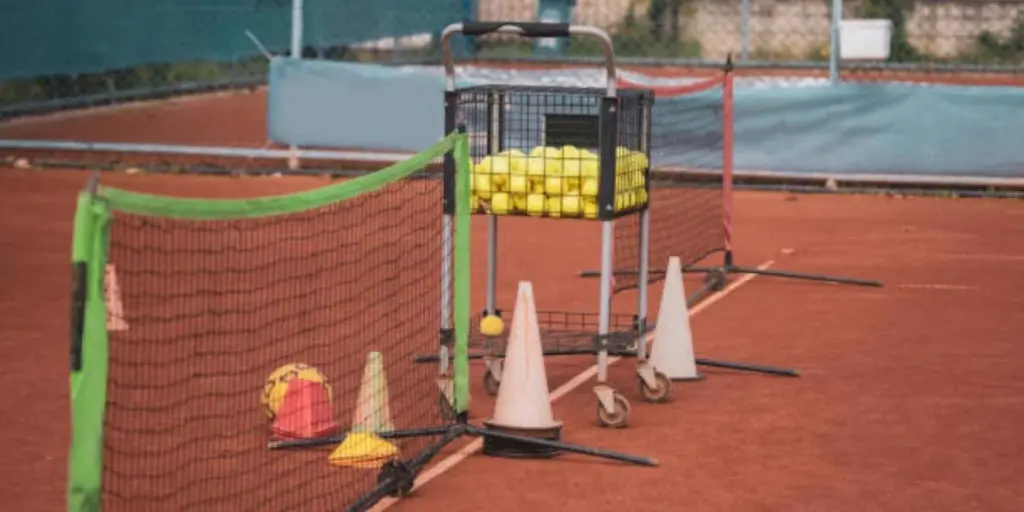In the past decade there’s been an enormous growth in children and adults taking up tennis for both recreational purposes and to play competitively. As the sport begins to grow in popularity there’s now more demand than ever for tennis training equipment for coaches and players.
This equipment ranges from very simple products to more complex ones, but they’re all designed with one goal in mind – to help improve tennis playing capabilities. Here’s a look at some of the most sought after tennis training equipment around the world and what future consumer demands are projected to look like in this niche market.
Table of Contents
Is tennis training equipment necessary?
Global market value of tennis training equipment
7 trends in tennis training equipment
Conclusion
Is tennis training equipment necessary?
Consumers who want to take up tennis, or perhaps have been playing for years and want to improve their game, will gain a lot from having appropriate tennis equipment for training purposes. The correct type of training equipment will depend on the age of the consumer but even the most basic type of training gear will positively impact a player’s results.
For coaches, tennis training equipment is vital. It allows for a smooth tennis lesson and it also enables the coach to focus on a specific part of the player’s game that needs the most improvement. Having good tennis equipment is highly recommended for younger players who are still in the development stages as some of the equipment can make the tennis lessons more enjoyable and keep the players engaged.
Technology is also starting to be further integrated into tennis training equipment. For example, devices such as smart sensors that can be attached to a tennis racquet or worn on the body are able to provide real-time data and analysis of their performance. These advancements in technology offer important insights into areas that need improvement and help players track their progress over time.
Global market value of tennis training equipment
Tennis training equipment for coaches and players has reached new heights with new technologies emerging and more studies being conducted on the best way to effectively train for the sport at various ages. That being said, a lot of the training equipment is universal and can be used for player’s of all abilities and age groups. The market does have specific equipment catered to certain types of players though, and it’s these products that are really helping to drive sales in recent years.
In 2021 the global tennis training equipment market reached USD 3.77 billion. With more consumers heading outside and taking an interest in tennis as a recreational activity thanks to the TV broadcasting of the Grand Slams, this number is expected to rise steadily at a compound annual growth rate (CAGR) of 2.2% between 2022 and 2030. This rise can also be put down to people taking a more active interest in their overall health with many people looking for alternative sports to participate in.
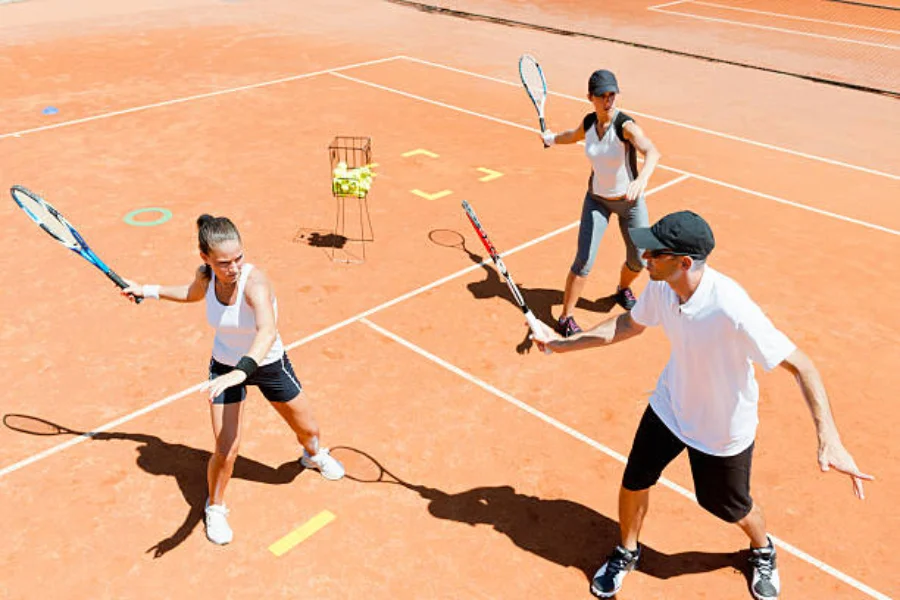
7 trends in tennis training equipment
There are a lot of options when it comes to tennis training equipment. Even though modern products have come into the market, both coaches and players still heavily rely on inexpensive traditional pieces of equipment.
The latest trending tennis training equipment for coaches and players includes the rebound ball, the topspin practice device, cones with numbers, resistance bands, mini tennis sets, the tennis ball machine, and reaction lights. Keep reading to learn more about each product and why consumers can’t get enough of them.
Rebound ball
The rebound ball is a very cost effective training device for tennis and does exactly what the name suggests. A standard tennis ball is attached to a long elasticated string which is tied down on the other end to a plastic weight. The weight inside is usually sand and can be removed for easier transportation. When the ball is hit the string expands and allows the ball to bounce back to the player so that they can continue to hit the ball.
This is a great training device for younger players who may not always have someone to hit with or who may want to do some extra training at home. The way the ball rebounds makes it seem like the consumer is hitting with someone else, so it mimics a real tennis rally. For players who are just learning the sport and who may not be able to hold a rally with another player, the rebound ball is the perfect way to help them develop their hitting skills before they make their way back to the tennis court.
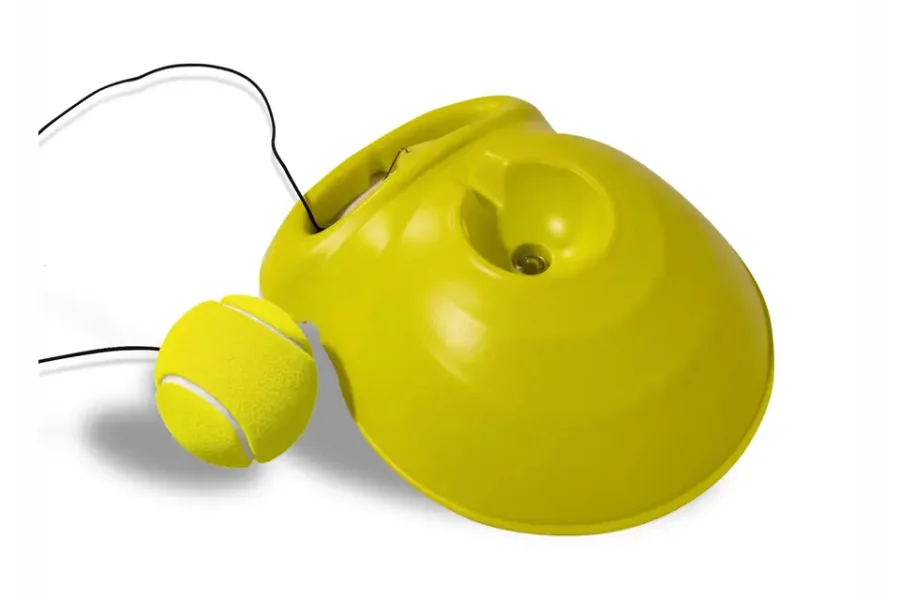
Topspin practice device
A more mature alternative to the rebound ball is the topspin practice device. Topspin is very important in tennis so it’s essential that beginners learn how to hit the ball with topspin if they’re ever going to develop as a player. Coaches constantly teach their players how to hit with topspin but for beginners this can be tricky – which is where the topspin practice device comes into play.
This piece of tennis training equipment allows the player to line up the ball and see up close if they’ve managed to create any topspin. The ball itself is attached to a weighted stick so it won’t move very far from the player when hit. Coaches are increasingly using this piece of tennis training equipment as a way to teach topspin in a repetitive but controlled environment, and some players are now starting to use the topspin practice device at home as well for extra practice.
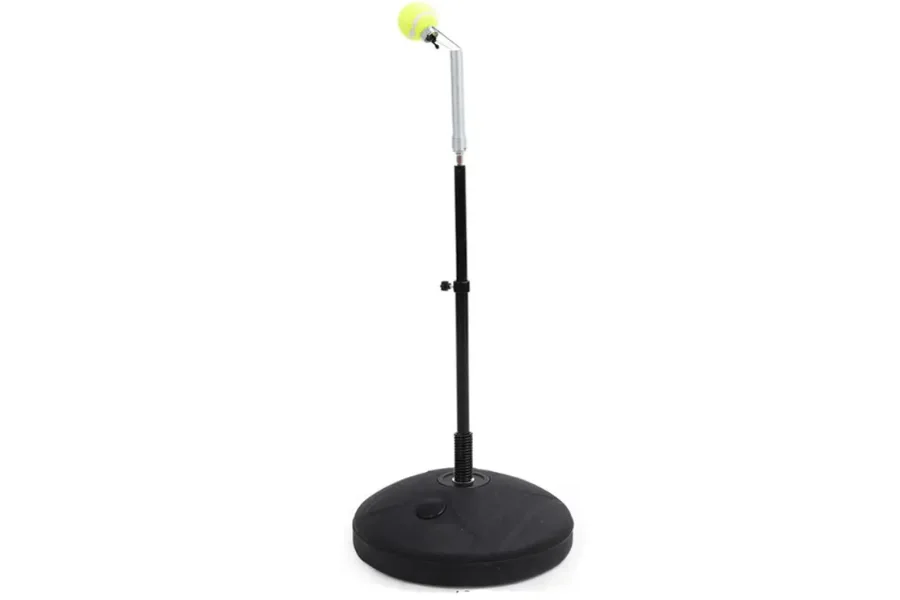
Cones with numbers
Plastic cones are used across the world of sport and are perhaps the simplest form of training equipment on the market today. For tennis, cones can be used for a variety of purposes including being used for target practice, footwork drills, or as boundaries for games for the younger players. Plastic cones are very lightweight too so they’re easy for coaches to transport and carry around in their tennis bag.
The basic training cone is seen at almost every tennis lesson, but tennis coaches have now started to use training cones with numbers too. The idea behind these cones is that the coach is better able to use them for target practice, whether that be for groundstrokes or targeted serving, by calling out a certain number that the player then has to hit with their shot. It’s a simple but very effective training method and is on trend today.
Resistance bands
Resistance bands are one of the best ways to condition the body for tennis and have been a popular product for decades. They can be used both on and off of the court in a variety of ways that will help to develop both the shots of the player in question as well as the leg strength. One of the most popular ways to use resistance bands in tennis is around the upper leg area where the player is forced to keep the legs apart in the ready position while training to fight against the resistance band.
Resistance bands can also be used in warm ups around the ankles and in the gym with players making a tennis swing rotation motion against the strength of the resistance band. Modern versions of the resistance band that are now starting to be used more often can also be attached to the handle of the tennis racket while the player is hitting tennis balls to help improve their overall strength.
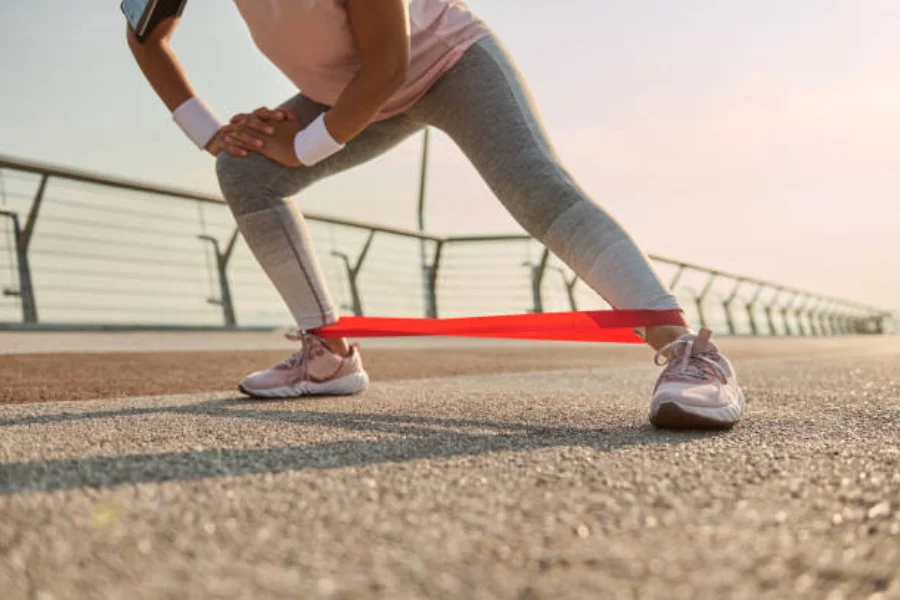
Mini tennis set
Mini tennis is a relatively new concept in tennis that’s really starting to gain popularity. In the past children had to play with full sized nets and tennis rackets but with the invention of mini tennis equipment they are now able to play with tennis gear that’s a more appropriate size. These mini tennis sets are being heavily used by coaches but are also ideal for parents to have at home as they can be set up wherever there’s enough space.
The equipment in the mini tennis sets can vary but the most important components of them are the mini tennis rackets, the shorter portable tennis net, and the foam balls which make it easier for younger children to not only hit the ball but also maintain a rally as the balls don’t bounce very much. With more children actively taking up tennis for recreational purposes this is a very helpful development in the world of tennis training equipment.
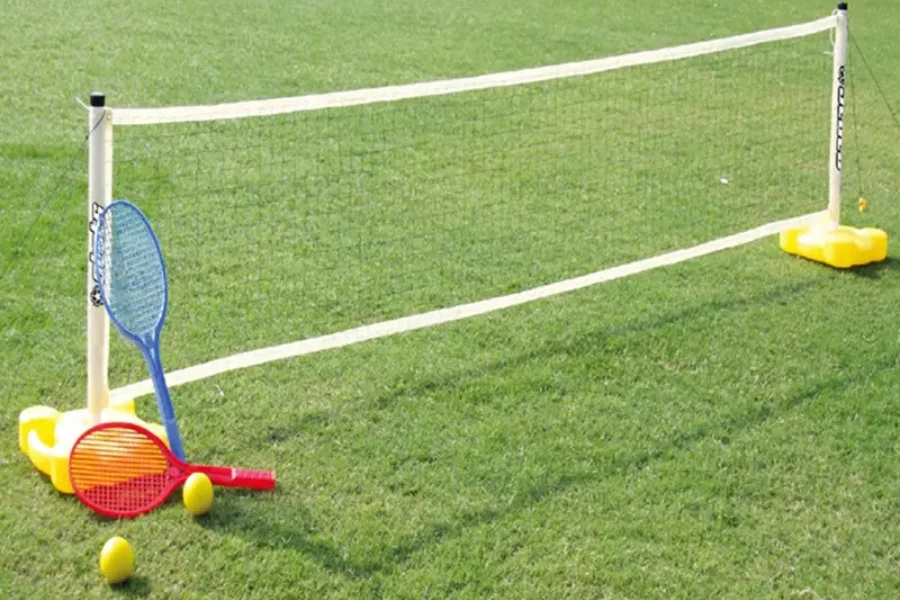
Tennis ball machine
The tennis ball machine is one of the most useful and easy to use types of tennis training equipment. It’s heavily used by adults who want to practice hitting by themselves in a repetitive way but it can also be used for younger players too when the settings are adjusted. The ball machine is completely portable too and the latest versions are rechargeable so they don’t need to be plugged in while being used.
For more advanced tennis players the ball machine is like their best friend. There are various settings that can be changed on the ball machine such as the speed the ball is released at, the angle of the ball being launched, the height of the ball, and the frequency at which it changes direction. Players can have a full workout or they can train a specific part of their game even without a hitting partner or coach by their side. This is also a great investment for tennis clubs who can rent the ball machine out by the hour to its members.
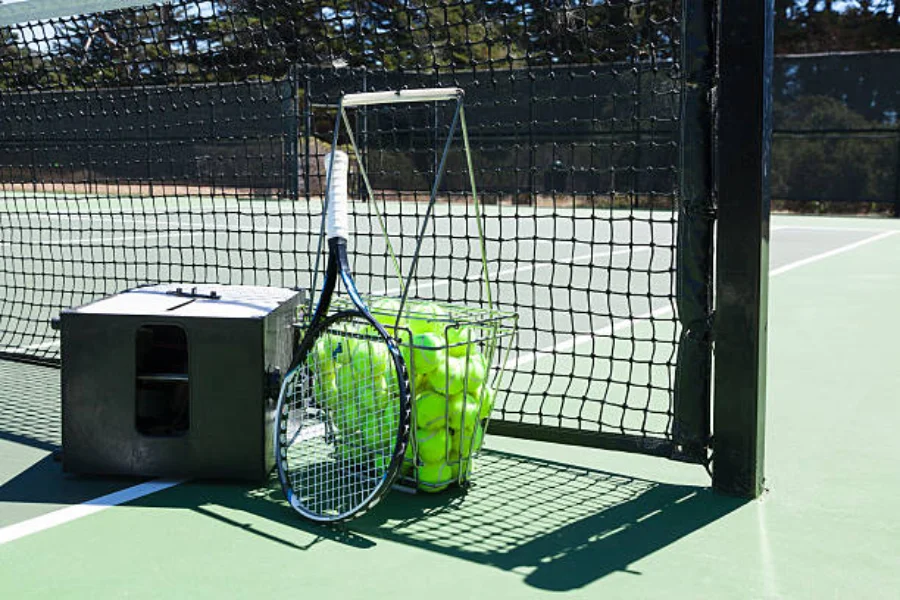
Reaction lights
Reaction lights are a more modern piece of training equipment that’s not only used in tennis but also other sports such as football and basketball. The idea behind the reaction lights is to improve hand-eye coordination as well as agility with the different devices lighting up one after the other in different patterns to always keep the person guessing as to which one to tap.
For tennis reaction lights can be used in a number of different ways. They can be stuck onto a wall to improve a players footwork and reach, or they can be placed on the ground for a serious footwork routine that also works in some essential lunges. However the reaction lights are used in tennis training, they’re proving to be a big hit and many of the world’s top tennis players have started to implement them into their training regime too.
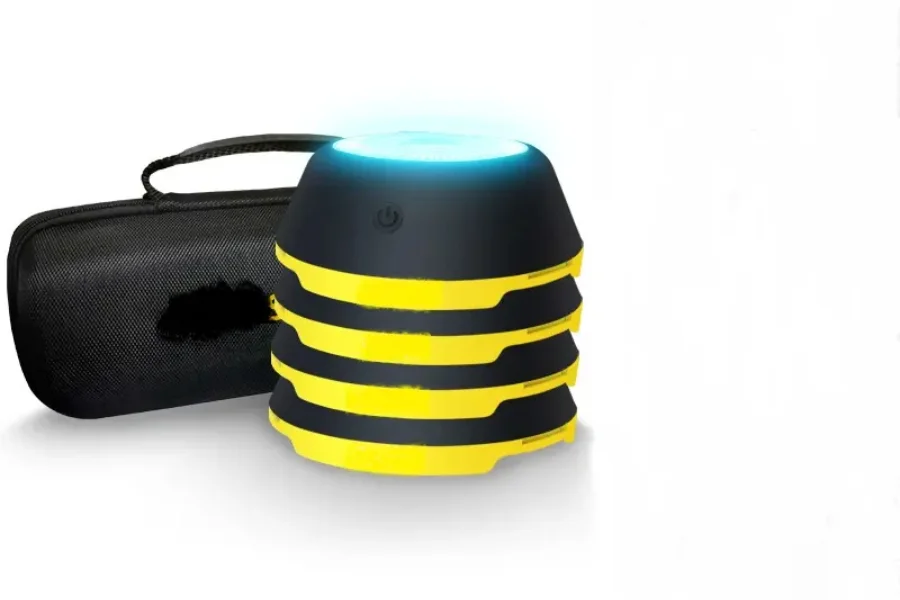
Conclusion
Tennis is a sport that’s only growing in popularity, both with consumers who are taking up tennis for the first time and those who are looking to develop their game. When it comes to the top trending tennis training equipment for coaches and players it’s important to remember that some will be used more by one than the other and in some instances, such as with the training cones, both players and coaches will rely upon them.
The rebound ball, topspin practice device, cones with numbers, resistance bands for tennis, the mini tennis set, the tennis ball machine, and reaction lights are very popular today and are expected to remain high in demand in the coming years. There can be no doubt that consumers of all ages around the globe have a growing interest in tennis in one way or another so the demand for tennis training equipment will only increase, as well demand for tennis clothing.
